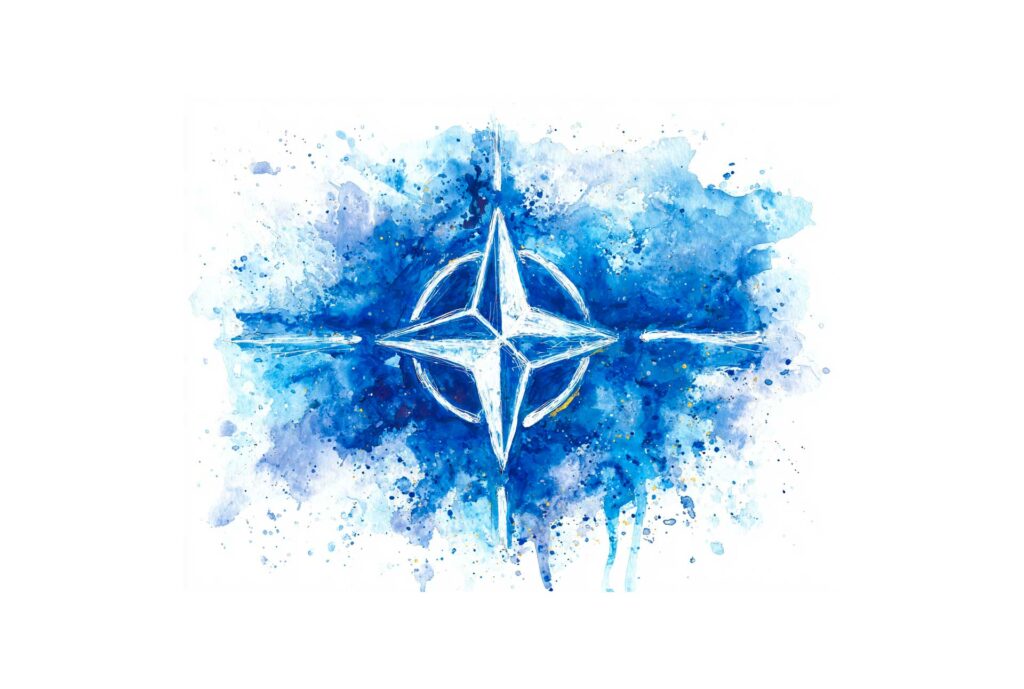
Lithuania alerts NATO after two Russian Gerbera drones carrying 2 kg of explosives cross its airspace in July 2025.
In July 2025, Lithuania recorded two incursions by Russian or Russian-launched drones into its airspace, on July 10 and 28. Each carried up to 2 kg of explosives and was identified as a Gerbera-type drone, a Russian variant of the Iranian Shahed. In response to this threat, the Lithuanian foreign and defense ministers sent a letter to NATO calling for an immediate strengthening of air defense capabilities on the eastern flank. These incidents also raise international concerns about the involvement of Indian-made components in the Shahed drone supply chain.
The nature of the incidents and strategic context
On July 10, 2025, a drone identified as Gerbera entered Lithuanian airspace from Belarus. It crashed near the Šumskas border checkpoint, approximately 1 km from the border. The Prime Minister and the Speaker of Parliament were briefly taken to safety before it was deemed not to be dangerous. On July 28, a second similar drone crossed the border from Belarus, triggering a major national alert. It was eventually found in the Gaižiūnai military training area, about 100 km from the border, after a four-day search. The drone was carrying 2 kg of explosives. According to the authorities, it was initially headed for Ukraine but was accidentally diverted by Ukrainian defenses.
These two events occurred against a backdrop of growing tensions on NATO’s eastern border, with the war in Ukraine continuing at a steady pace. Other allies such as Romania and Latvia have also reported similar violations of their airspace, often coming from Belarus or regions bordering Russia. Lithuania is therefore on the front line in facing this type of hybrid threat.
Technical characteristics of the Gerbera drone
The Gerbera is a Russian “sacrificial munition” or loitering munition drone, presented as a simplified version of the Iranian Shahed-136. Built mainly from wood and foam, it has a shortened delta-shaped wingspan and a propeller engine, usually a Mile Hao Xiang (60cc) or RCGF Stinger (70cc) combustion engine, costing between $430 and $550.
Its unit cost is estimated at around $10,000, compared to the much higher price of the Shahed-136. It can be equipped with an explosive payload (kamikaze), a reconnaissance module, or serve as a decoy to saturate enemy defenses. In recent months, armed and self-guided versions of the Gerbera have been documented in Ukraine.
Its range is estimated at 300 km without payload, with some Ukrainian data suggesting up to 600 km in certain configurations. Mesh network communication modules are installed to allow multiple drones to interconnect signals and increase robustness against electronic jamming.
The presence of components from Analog Devices, Texas Instruments, NXP, STMicroelectronics, U-Blox, and XLSEMI, as well as recently identified Indian-made modules in Shahed supply chains, is fueling concerns about the global nature of the supply chain.
Implications for NATO and air defense
In response to these incursions, Lithuania has officially requested NATO support. In a joint letter to Secretary General Mark Rutte, Ministers Kęstutis Budrys (AE) and Dovilė Šakalienė (Defense) requested the deployment of capabilities, including experimental ones, to strengthen national and collective air defense.
NATO responded that the Supreme Allied Commander Europe (SACEUR) is authorized to take appropriate measures. It indicated that member states are working to strengthen their drone detection and counter-drone capabilities, including through long-range radar systems, interceptor drones, and jamming or neutralization capabilities.
Lithuania also called for the acceleration of the NATO rotation model, which provides for the regular deployment of troops, aircraft, and ground-to-air systems to deter and respond to threats along the eastern flank.
These measures are critical: Gerbera drones are inexpensive and can overwhelm systems, forcing the use of more costly missiles (up to several hundred thousand euros). Drone-to-drone interceptors or anti-drone lasers are cost-effective solutions considered more suitable for this type of hybrid attack.

Issues related to the international supply chain
The recent discovery of components manufactured in India in Shahed drones has intensified the international debate on the responsibility of civilian technology suppliers for military uses. Critical electronic components supplied by international companies can be diverted to military drone production lines. This raises the need for export controls, investigation of logistics channels, and increased cooperation between regulators and manufacturers.
Lithuania and its allies are now calling for enhanced traceability of electronic components integrated into hostile drones. This could lead to targeted sanctions, embargoes, or export restrictions on intermediaries linked to Russia or Iran.
Outlook and technical recommendations
For a defense specialist, several operational options are available:
- Accelerated deployment of short- and medium-range multi-sensor radars, coupled with automatic warning systems, to detect amateur or tactical drones.
- Adoption of low-cost (≈$5,000 per unit) light interceptor drones, effective against $10,000 Gerbera drones, to protect heavy systems.
- Implementation of electronic anti-drone solutions (GNSS jamming, operational links) with rapid transition to engagement capability.
- Intensification of inspections of international supply chains, audits of electronic suppliers, and targeted sanctions to reduce flows to entities linked to the production of Gerbera or Shahed drones.
- Regional integration into the NATO air defense rotation model, with drone saturation simulation exercises.
The two Gerbera drone incursions in July 2025 illustrate the shift to a more diffuse and economical threat: cheap drones that are difficult to intercept, capable of carrying explosive payloads, and penetrating allied airspace. The Lithuanian authorities have therefore legitimately called on NATO to strengthen its capabilities and accelerate the implementation of the rotation mechanism. In the longer term, the issue of supply chains, particularly with the discovery of Indian components, requires concerted action to prevent civilian suppliers from feeding hostile military drone programs.
War Wings Daily is an independant magazine.